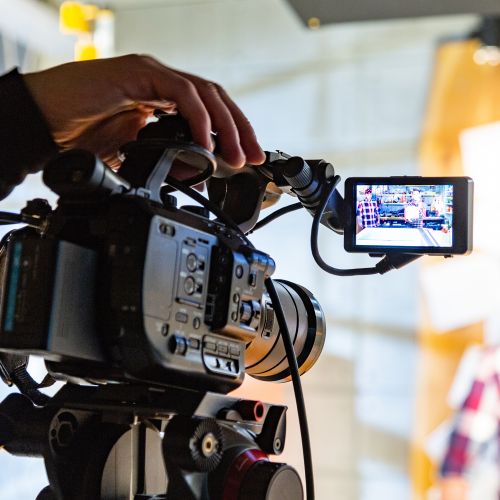The Function of Legal Videography in Modern Legal Procedures
Exploring the Devices of Legal Videography: Unveiling Its Procedure in Shielding Genuine Aesthetic Testimony for Judicial Proceedings
In the world of judicial procedures, the role of legal videography stands as a cornerstone in maintaining and presenting visual proof. As modern technology continues to development, the systems behind lawful videography have actually become increasingly elaborate, using an important layer of credibility to statements captured on video clip.
Historic Development of Lawful Videography
Examining the historic development of lawful videography exposes a significant improvement in the catching and presentation of visual evidence within the lawful landscape. In the past, lawful procedures heavily depended on created records and photos to record occasions and supply proof. With the development of video clip technology, the lawful industry saw a paradigm change in exactly how visual testimony was captured and presented.
The development of legal videography can be traced back to the late 20th century when innovations in video clip recording tools made it more accessible for use in court rooms. This technological innovation not only improved the accuracy and reliability of aesthetic evidence yet additionally changed the means instances existed to courts and judges (Legal Videography). Attorneys began to identify the influential power of video recordings in conveying emotions, nuances, and non-verbal signs that composed pictures or transcripts alone can not capture successfully

Innovation Developments in Video Documentation
What crucial technological improvements have revolutionized video documentation in the legal area? The lawful area has actually seen substantial improvements in video documentation innovation that have actually improved the credibility and dependability of visual proof in judicial proceedings.
Moreover, advancements in video security and watermarking innovations have actually reinforced the protection and tamper-proof nature of video clip evidence, protecting it against unapproved changes or meddling. Furthermore, the arrival of cloud storage space services and remote gain access to capacities has streamlined the storage, access, and sharing of video proof, helping with seamless partnership amongst lawyers and guaranteeing effective accessibility to crucial aesthetic testaments when needed. These technical developments in video documentation have actually undoubtedly transformed the legal area, boosting the precision, reputation, and admissibility of visual proof in judicial procedures.
Duty of Legal Videographers in Court Room Settings
The advancement of video paperwork modern technology in the lawful area has demanded a vital role for lawful videographers in courtroom setups, guaranteeing the integrity and reliability of aesthetic testaments offered throughout judicial procedures. Legal videographers play an essential duty in capturing and protecting exact visual proof that can be essential in lawsuit. Their responsibility prolongs to establishing devices, tape-recording procedures, and producing premium video clips that precisely show the occasions in the courtroom.
Additionally, legal videographers commonly function carefully with legal groups to make sure that the video evidence aligns with the instance's needs and can be successfully provided in court to sustain the lawful arguments being made. In general, the role of lawful videographers in court room settings is essential in maintaining the concepts of justice and making certain the transparency of legal process. Legal Videography.
Ensuring Admissibility and Honesty of Video Evidence
To preserve the credibility of aesthetic proof provided in legal process, making sure the admissibility and honesty of video clip proof is an important responsibility for lawful videographers. Admissibility refers to the my review here approval of evidence by the court, and for video proof to be admissible, it has to fulfill particular standards. Lawful videographers play a vital duty in making sure that the videos they catch follow the rules of proof, such as authenticity, reliability, and significance.
Stability of video evidence entails keeping the originality and accuracy of the video footage from the moment it is recorded till it is provided in court. This includes securely storing the video documents, recording the chain of safekeeping, and stopping any meddling or changes. Lawful videographers need to abide by stringent protocols to guarantee the honesty of the video evidence and avoid any type of obstacles to its authenticity.
Future Trends in Legal Videography
Given the boosting dependence on modern technology in lawful proceedings, lawful videographers are poised to accept cutting-edge developments forming the future of visual testimony capture and presentation. One of the prominent patterns on the horizon is the integration of digital truth (VIRTUAL REALITY) and increased truth (AR) innovations right into lawful videography. These technologies have the prospective to reinvent just how visual proof exists in courtrooms, permitting courts and juries to submerse themselves in the scene of the criminal activity or incident.
In addition, using expert system (AI) formulas for video clip analysis is anticipated to streamline the process of examining and analyzing large quantities of video footage. AI can assist in recognizing key minutes, abnormalities, and patterns within video clips, boosting the effectiveness of legal investigations.

Final Thought
To conclude, legal videography has played a crucial function in supplying genuine aesthetic proof for judicial process. Through technical developments and the proficiency of lawful videographers, the stability and admissibility of video evidence are made certain in courtroom settings. As lawful videography remains to progress, it will certainly be crucial to support standards that keep the precision and integrity of aesthetic testimony for the future of legal procedures.
Taking a look at the historical development of lawful videography reveals a substantial makeover in the capturing and discussion of aesthetic evidence within the lawful landscape.The advancement of video paperwork technology in the lawful area has required a critical role for lawful videographers in court settings, guaranteeing the honesty and integrity of visual testimonies offered during judicial process. Additionally, legal videographers often work carefully with legal groups to make sure that the video clip evidence lines up with the instance's needs and can be successfully offered in court to support the legal arguments being made.To keep the credibility of aesthetic proof offered in legal proceedings, making certain the admissibility and honesty of video additional hints proof is a crucial duty for legal videographers. As lawful videography continues to evolve, it will be essential to copyright criteria that preserve the accuracy and integrity of aesthetic statement for the future of lawful process.